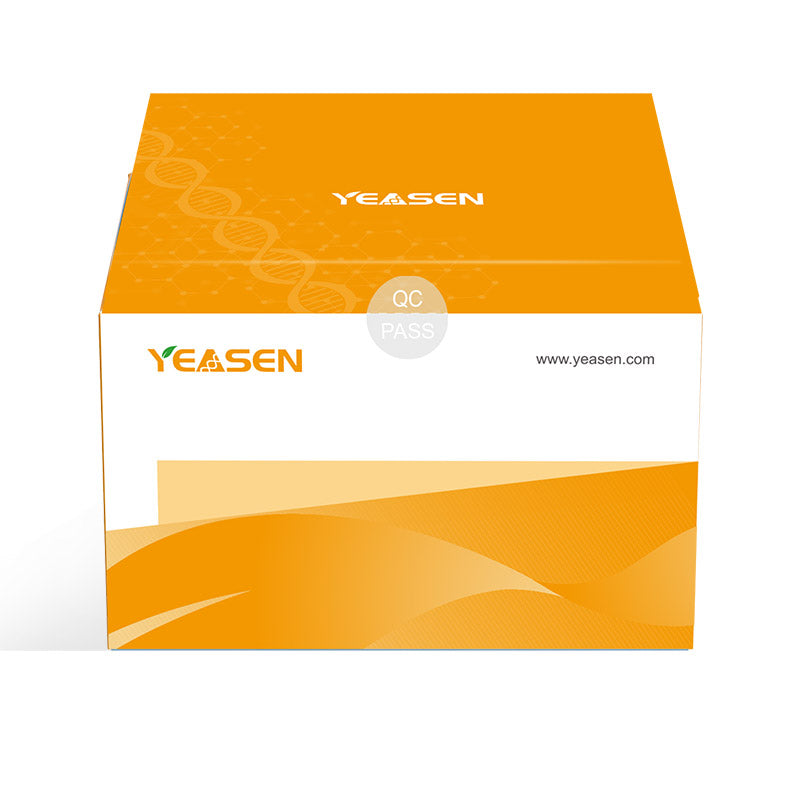Beskrivning
Plasmid DNA Residue Detection Kit is used for the quantitative analysis and detection of plasmid DNA residues in biological products such as vaccines, gene and cell therapy products. Because viral vectors (e.g. lentiviruses, adenoviruses, etc.) are usually used in the development and production of these biologics, and most of the viral vectors are prepared by transient transfection of plasmid DNA into packaged cell matrices, so in order to ensure the purity and safety of the viral vectors, these plasmid DNAs attached on the surface of viral vectors will be removed as impurities during the viral purification process.
The kit designs specific primers for plasmid DNA sequences used in the market, and adopts the qPCR fluorescent probe principle to detect residual plasmid DNA specifically and rapidly, and its minimum detection limit can reach 1 copies/μL level, and the kit is accompanied by a linear Plasmid DNA Control (plasmid DNA quantitative reference). The kit needs to be used together with the the Residual DNA Sample Preparation Kit (Cat# 18461ES).
Feature
- Compliance with regulations: the products are fully validated according to the requirements of Chp, USP, ICH, etc., and their performance is in line with Chinese and foreign regulations and standards;
- Guarantee of quality: the raw materials of the kits are all self-developed, and the qPCR Mix and other enzyme products are produced in an ultra-clean enzyme factory;
- High sensitivity: the limit of quantification can reach 4 copies/μL level;
- High precision: high intra-batch repeatability and low inter-batch variation;
- Strong exclusivity: specific detection of residual Plasmid DNA without interference from other exogenous genomic DNA;
- Strong anti-interference: add internal control (IC), easy to exclude sample interference, reaction preparation abnormalities and other factors.
Application
Residual Plasmid DNA test in biological products.
Specification
|
Sensitivity |
4 copies/μL (range 4×101copies/μL ~ 4×106copies/μL) |
|
Assay Time |
~1.5 hours |
|
Assay Principle |
Fluorescent probe qPCR method |
|
Required Instruments |
Real-time fluorescence quantitative PCR system |
Components
|
Components No. |
Name |
41323ES50-EN |
41323ES60-EN |
|
41323-A |
Plasmid qPCR Mix |
0.75 mL |
1.5 mL |
|
41323-B |
Plasmid Primer&Probe Mix |
200 μL |
400 μL |
|
41323-C |
DNA Dilution Buffer |
1.8 mL×2 |
1.8 mL×4 |
|
41323-D |
Linear Plasmid DNA Control (4×108 copies/μL) |
25 μL |
50 μL |
|
41323-E |
IC* |
50 μL |
100 μL |
*IC:Internal control.
Storage
This product should be stored at -25~-15℃ for 2 years.
Both 41323-A and 41323-B should be stored protected from light.
Figures
- Limit of quantification
Plasmid DNA was detected at concentrations of 40copies/μL, 10copies/μL, 4 copies/μL, and 1copies/μL, with 10 replicates for each concentration. The results showed that the CV was <20% at concentrations of 4copies/μL and above, i.e., the limit of quantification of the plasmid DNA residue detection kit could reach 4 copies/μL.
|
Test item |
Plasmid DNA (copies/μL) |
|
|
Quantity |
Return ratio |
|
|
1 |
5.33 |
133.15% |
|
2 |
4.14 |
103.45% |
|
3 |
5.54 |
138.44% |
|
4 |
4.47 |
111.77% |
|
5 |
5.85 |
146.27% |
|
6 |
4.94 |
123.59% |
|
7 |
3.63 |
90.85% |
|
8 |
4.3 |
107.49% |
|
9 |
4.1 |
102.39% |
|
10 |
4.37 |
109.19% |
|
Average value |
4.67 |
\ |
|
CV% |
15.33% |
\ |
Table 1. Limit of quantification (LOQ) assay results for Plasmid DNA
Documents:
Betalning och säkerhet
Din betalningsinformation behandlas säkert. Vi lagrar inte kreditkortsuppgifter och har inte heller tillgång till din kreditkortsinformation.
Förfrågan
Du kanske också gillar
Vanliga frågor
Produkten är endast avsedd för forskningsändamål och är inte avsedd för terapeutisk eller diagnostisk användning hos människor eller djur. Produkter och innehåll skyddas av patent, varumärken och upphovsrätt som ägs av Yeasen Biotechnology. Varumärkessymboler anger ursprungsland, inte nödvändigtvis registrering i alla regioner.
Vissa applikationer kan kräva ytterligare immateriella rättigheter från tredje part.
Yeasen är dedikerad till etisk vetenskap, och anser att vår forskning bör behandla kritiska frågor samtidigt som den säkerställer säkerhet och etiska standarder.

